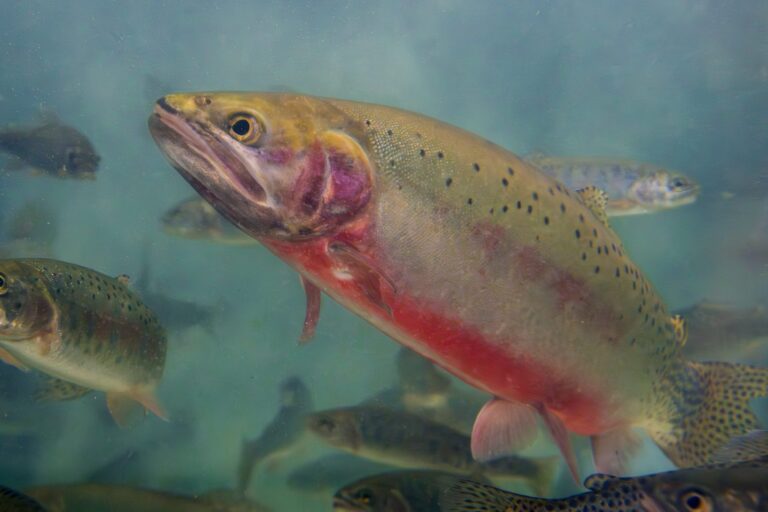Decades of work keeps Rio Grande Cutthroat Trout off Endangered List

Information and photo provided by New Mexico Department of Game and Fish
Decades of dedicated conservation work by the New Mexico Department of Game and Fish and its partners have secured a bright future for the Rio Grande cutthroat trout (RGCT). This collaborative effort culminated in the U.S. Fish and Wildlife Service’s recent decision that the species does not warrant protection under the Endangered Species Act, affirming its long-term stability throughout its range.
The Rio Grande cutthroat trout, New Mexico’s state fish, is native to high-elevation streams in New Mexico and Colorado, including watersheds of the Canadian, Pecos and Rio Grande rivers. The species is threatened by competition and hybridization with nonnative trout, such as rainbow, brook and brown trout, as well as habitat loss, drought and the effects of wildfires.
Conservation efforts for the RGCT date back to the 1960’s and 1970’s. In 1989, the Department created a dedicated biologist position to focus on RGCT conservation. In 2003, the RGCT Conservation Team was established, bringing together federal and state agencies, tribes, municipalities, non-governmental organizations and private landowners. This collaborative group has worked tirelessly to protect and restore RGCT populations across the region.
The Department has led several recent projects to remove nonnative trout and reintroduce the RGCT into its native habitats. At the Seven Springs Hatchery, a broodstock program established by the Department produces thousands of RGCT annually. This source of fish is key to providing angler opportunities and creating new populations throughout New Mexico.
One of the most notable achievements is the Rio Costilla restoration project, which added more than 120 miles of stream, 16 lakes and a reservoir of protected RGCT habitat. This project also restored populations of the Rio Grande chub and sucker, which were similarly kept off the Endangered Species list this year. Additional restoration efforts have been completed on Middle Ponil Creek and Willow Creek, with new projects, such as Cow Creek in the Pecos watershed, currently under way.
To address the impacts of wildfires, the Department and its partners have salvaged RGCT populations from affected areas, relocating them to unoccupied streams or incorporating them into hatchery programs for future stocking. Following post-fire flooding, biologists evaluate stream conditions to identify opportunities for future restoration, ensuring the species will continue to thrive.
The decision not to list the RGCT as threatened or endangered highlights the success of the Department’s conservation initiatives and partnerships. While this decision is a significant milestone, the Department remains committed to the long-term survival of the Rio Grande cutthroat trout. This iconic species is a vital part of New Mexico’s natural heritage, and the Department will continue its efforts to ensure it thrives in its native habitat for generations to come.
Restoring the Gila Trout
New Mexico is a beautiful place to enjoy the outdoors. In the state, there’s no shortage of inspiring experiences to observe wildlife, bike, hunt or fish with friends, family and loved ones.
Two New Mexico Department of Game and Fish biologists catch and release Gila trout in their spare time in a historic canyon in the Gila National Forest under suspended bridges called the Catwalk in Catron County. Once intended for mining gold, the Catwalk has now been rebuilt for the purpose of recreation like hiking and habitat improvements so anglers can fish in a unique canyon.
The most recent habitat improvement project, which reduced streambank erosion and increased stream shading with the addition of native riparian vegetation along a quarter-mile stretch of Whitewater Creek, was completed earlier this month, so it is a great time to head to the Gila and fish.
The Gila trout is not only one of the rarest trout in North America, but also one of the earliest spawning. Spawning activity may be beginning in some creeks and peak in April. Today, Gila trout conservation is guided by the Gila Trout Recovery Plan, established in 2022. A diverse team of State and Federal agencies, including the New Mexico Department of Game and Fish, as well as university researchers and non-governmental organizations, continues a program of stream restoration – removing nonnative species, constructing barriers to prevent nonnatives from reinvading, and reestablishing Gila trout.


